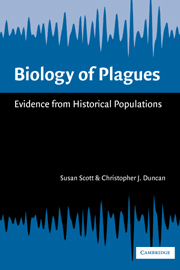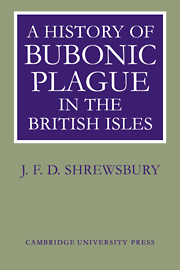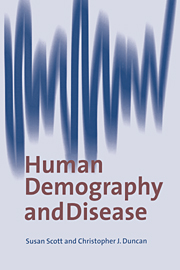Biology of Plagues
The threat of unstoppable plagues, such as AIDS and Ebola, is always with us. In Europe, the most devastating plagues were those from the Black Death pandemic in the 1300s to the Great Plague of London in 1665. For the last 100 years, it has been accepted that Yersinia pestis, the infective agent of bubonic plague, was responsible for these epidemics. This book combines modern concepts of epidemiology and molecular biology with computer-modelling. Applying these to the analysis of historical epidemics, the authors show that they were not, in fact, outbreaks of bubonic plague. Biology of Plagues offers a completely new interdisciplinary interpretation of the plagues of Europe and establishes them within a geographical, historical and demographic framework. This fascinating detective work will be of interest to readers in the social and biological sciences, and lessons learnt will underline the implications of historical plagues for modern-day epidemiology.
- Integrated and novel approach to the study of plague epidemics past and present
- Links epidemiology and computer-modelling with historical records to show that Black Death and the Great Plague of London could not have been due to bubonic plague
- Interdisciplinary study of interest to both social and biological sciences
Reviews & endorsements
"… compelling …"
American Journal of Human Biology
"The book is well-illustrated with maps, graphs and other data in tabular form and ends with an extensive bibliography … This fascinating work is strongly recommended to all microbiolgists, immunologists, epidemiologists, and historians of these related disciplines."
Immunological Investigations
"Biology of Plagues is a fascinating read for those interested in the history of infectious disease and it is provocative and thought provoking."
The Lancet
"… compelling … Scott and Duncan offer evidence that will convince readers and provoke historians to test their conclusions through additional research. This is an outstanding and complex book that not only makes a significant contribution to many different scholarly fields, but it reads like a detective story and is difficult to put down … this work is a key reinterpretation that will influence future research and the teaching of European and world history."
Canadian Bulletin of Medical History
"Filled with scientific and historical data, Biology of Plagues will provide ample fodder for not only historians and sciences interested in the study of historic epidemics, but also for modern day public health experts who not only have to deal with current outbreaks, but also future outbreaks of both well-known and novel diseases."
Anna Dogole, History in Review (historyinreview.org)
Product details
July 2005Paperback
9780521017763
436 pages
228 × 153 × 24 mm
0.656kg
121 b/w illus. 18 tables
Available
Table of Contents
- 1. Introduction
- 2. Epidemiological concepts
- 3. The biology of bubonic plague
- 4. The Great Pestilence
- 5. Case study: the plague at Penrith in 1597–98
- 6. Pestilence and plague in the 16th century in England
- 7. Plagues in the 16th century in northern England: a metapopulation study
- 8. Plagues in London in the 17th century
- 9. Plagues in the provinces in the 17th century
- 10. Plague at Eyam in 1665–66: a case study
- 11. Continental Europe during the third age of plagues: a study of large-scale metapopulation dynamics
- 12. The Plague at Marseilles, 1720–22: an outbreak of bubonic plague? 13. Conclusions
- References
- Index.







